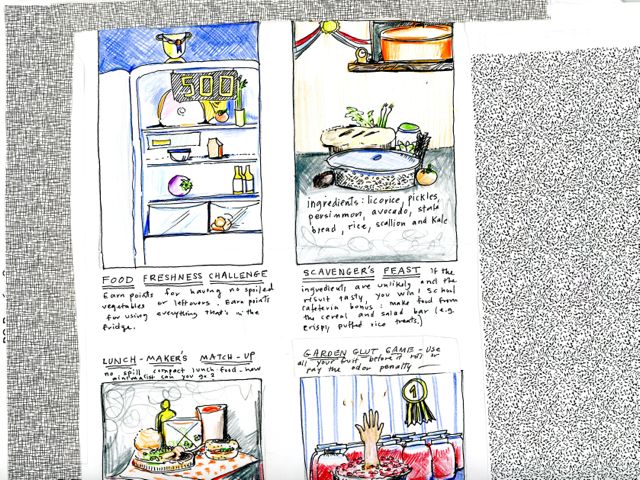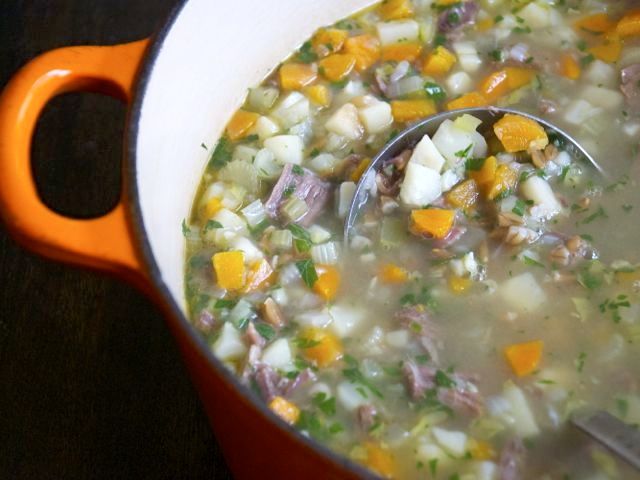
gamepost, l
(post, Joan Menefee)
At some point in the last four months, the gathering-cooking-writing balancing act went bust, and I was pretty much just gathering with an occasional spasm of cooking thrown in to make sure the oven stayed dirty. Writing was too hard. Nonetheless, I kept a list of possible blog topics on the fridge (where else?). It most recently read “Thomas Jefferson’s cookbook? Cheese in Wisconsin. Armenian food. Quince experiments. Interview with a food scientist. Port wine and choc. mousse party. New food drier. Fruit shrubs and related cocktails. Lefse seminar with hardcore Norwegian-Americans.” Eventually, the list began to curl. So I threw it away. I am big and human like that. If I want to run from my unfinished business, I can. For a while, that is. But even when I don’t write this blog, I am writing this blog. Once I got in the habit of mining my food life for tidbits strangers might find interesting, I was constantly hovering at an analytical remove from my everyday routine. And I am grateful for that. I am friends with a woman who studies the gamification of learning. If you don’t know what that is, don’t worry; my computer doesn’t even believe “gamification” is a word. As far as I can make out, this form of teaching harnesses the habits and passions of millennials to intellectual tasks. Call it “Learning for Lifelong Gamers.” Students are encouraged to adopt avatars for classroom use. They gain experience points rather than earning grades; they compete against one another in challenges instead of completing homework or sitting for quizzes. Exams are called “boss fights.” Cumulative scores are sometimes made public in the same way that high-scoring video-game players’ names are featured on a console marquee. [%image reference-image float=right width=400 caption='"We all want to be transported by our daily tasks."'] These ideas fascinate and terrify the teacher in me, but as I mull over my life as a food blogger, I realize that setting myself the challenge of writing about cooking monthly gamified it. Instead of just cooking, I was sorting different aspects of the activity, looking for ways I had changed or an interesting idea to write about. I saw my kitchen as part of a vast network of kitchens (and farms and restaurants). At times, I felt the surging, hungry energy of all the cooks and eaters around me. We were all playing this strange important game: ripping open boxes and reading directions, turning on stoves and cleaning out “crisper” drawers with little piles of parsley and lettuce lodged in their tight corners. And all of us striving for a satisfying meal. What is a game, after all, but the combination of a goal and (at least one) rule? In the case of cooking, the goal is to stay nourished; the rules are to find perishable, tasty foodstuffs, use cold to keep this stuff from growing bacteria, and use fire and knives to make it easier to digest. Oh, and try not to get bored. The language of experience points and role-playing games might not roll smoothly off my forty-something tongue, but I believe that beneath the unfamiliar vocabulary lies a pleasure in learning that I share with many millennials. At the end of the day, we all want to feel that what we do matters, and we all want to be transported by our daily tasks. A gamified world, broadly defined, offers such a life. Every time I get near the refrigerator, my mind starts whizzing with possibilities. Blog topics, sure, but also questions. Such as: # Is there interesting bacteria growing in my fridge? # Should I have my gut flora analyzed like [%content http://www.culinate.com/author/MoisesVelasquez-Manoff "Moises Velasquez-Manoff"] did? # What is the deal with the nationwide bacon obsession? When pork prices finally go through the roof, what will replace bacon? (I wish I even had one intelligent thought about this, but all I can think of are banana chips, and I know that’s wrong.) # Will food be successfully re-localized and home cooking become a pleasant and manageable lifestyle for the majority of Americans? Only time will tell on that last one. In the meantime, I will keep identifying new food challenges. My husband, for example, has decided he wants to see if we can find American lingonberries somewhere between Menomonie and Lake Superior. I think it’s time to learn exactly how hard it is to make croissants from scratch. I am old-fashioned enough to call my experience points “knowledge,” and I don’t believe anyone will ever get me to wear chain mail. But all the same, I have become a gamer and a blogger — a thoroughly 21st-century gal. [%image gamepost float=left width=650]

gamepost, l

reference-image, l